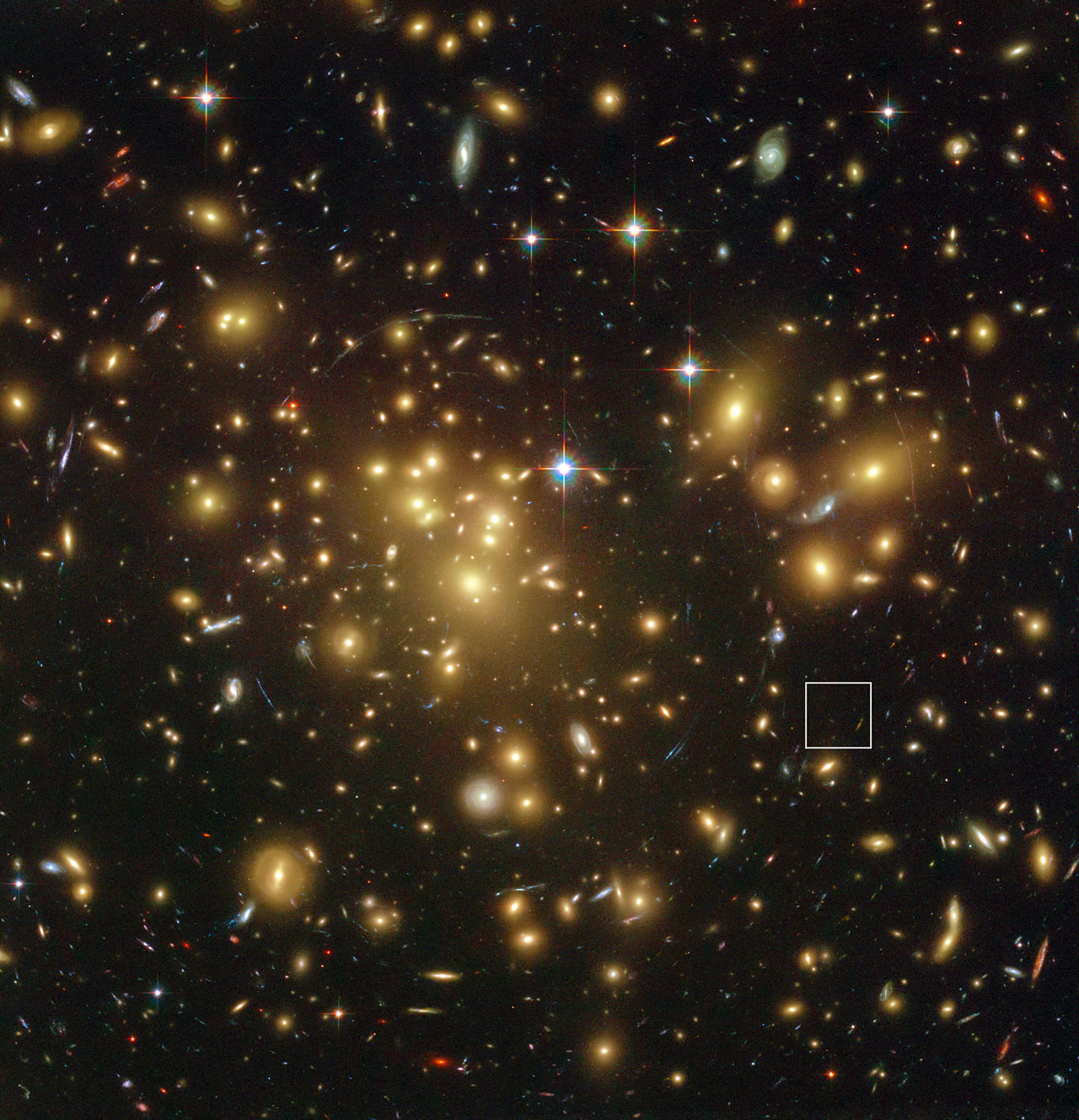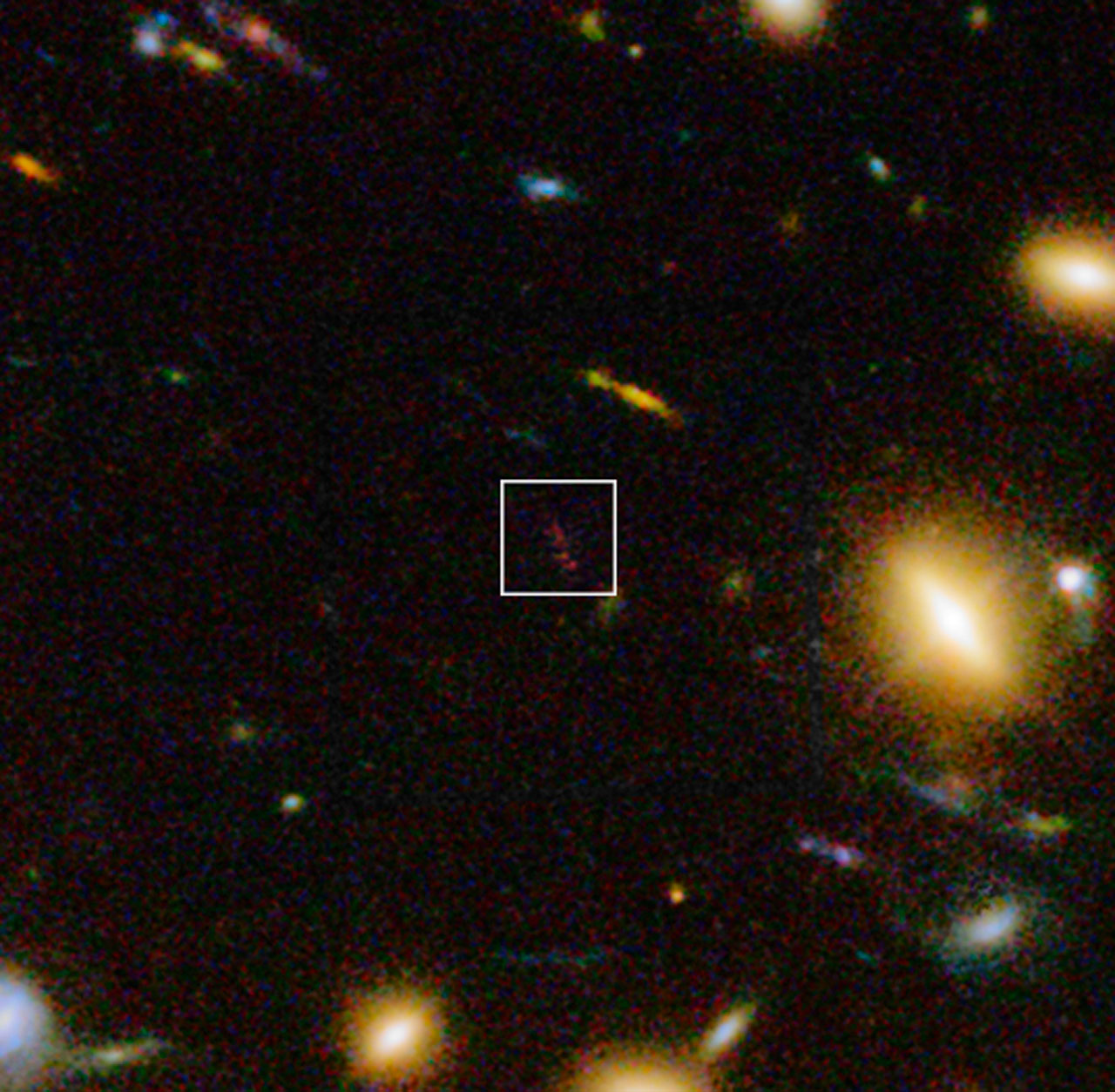Galaxy in Early Universe Grew Up Faster Than Expected (Photos, Video)

A remote galaxy that formed less than 1 billion years after the universe began is far more evolved than astronomers ever expected.
The observations of the cosmic object, called A1689-zD1, marks the first detection of dust in a galaxy that distant, and suggests that galaxies evolvedmuch more quickly after the Big Bang than originally suspected. You can also fly through the galaxy in a video.
"Although the exact origin of galactic dust remains obscure, our findings indicate that its production occurs very rapidly, within only 500 million years of the beginning of star formation in the universe — a very short cosmological time frame, given that most stars live for billions of years," Darach Watson, of the University of Copenhagen, said in a statement. Watson led an international team of researchers that studied the distant galaxy.
First identified in 2008, A1689-zD1lies 12.8 billion light-years from the sun. Such a distant young galaxy would normally be too difficult to detect, but scientists made use of the galaxy cluster Abell 1689 to amplify its light more than nine times. The cluster sits between the ancient galaxy and the Milky Way and serves as a gravitational lens, with gravity bending light around the cluster and amplifying it much like a magnifying glass.
Because of this lensing, astronomers were able to determine the distance to the galaxy using the European Southern Observatory's Very Large Telescope (VLT), and study its characteristics with the Atacama Large Millimeter/submillimeter Array (ALMA) telescope in Chile, the world's most powerful radio telescope.
"After confirming the galaxy's distance using the VLT, we realized it had previously been observed with ALMA," Watson said in the same statement. "We didn't expect to find much, but I can tell you we were all quite excited when we realized that not only had ALMA observed it, but that there was a clear detection. One of the main goals of the ALMA observatory was to find galaxies in the early universe from their cold gas and dust emissions — and here we had it!"
The quantity of stars and dust contained by A1689-zD1 was another surprise, contrasting with the expectation that dust would be scarce in early galaxies. Stars are built from dust, so the presence of more dust allows for the faster formation of young stars.
Get the Space.com Newsletter
Breaking space news, the latest updates on rocket launches, skywatching events and more!
"A1689-zD1 has turned out to be a hundred times less massive than the Milky Way, but forming new stars significantly faster," co-author Michal Michalowski, of the University of Edinburgh, said in the same statement. Michalowski led the effort to measure the properties of the ancient galaxy.
"Most of this star-formation activity is completely hidden from us by galactic dust, and we have not seen this before at such large distances. ALMA is the only telescope in the world sensitive enough to detect such remote galaxies," Michalowski added.

Previously, astronomers thought distant galaxies would be challenging to study in the wavelengths ALMA observes due to their decreasing metal content. However, A1689-zD1 was detected in only brief observations.
"This amazingly dusty galaxy seems to have been in a rush to make its first generations of stars," said co-author Kirsten Knudsen, from Onsala Space Observatory in Sweden. "In the future, ALMA will be able to help us find more galaxies like this, and learn just what makes them so keen to grow up."
The research was published online today (Mar. 2) in the journal Nature.
Follow us @Spacedotcom, Facebook and Google+. Original article on Space.com.
Join our Space Forums to keep talking space on the latest missions, night sky and more! And if you have a news tip, correction or comment, let us know at: community@space.com.

Nola Taylor Tillman is a contributing writer for Space.com. She loves all things space and astronomy-related, and enjoys the opportunity to learn more. She has a Bachelor’s degree in English and Astrophysics from Agnes Scott college and served as an intern at Sky & Telescope magazine. In her free time, she homeschools her four children. Follow her on Twitter at @NolaTRedd









